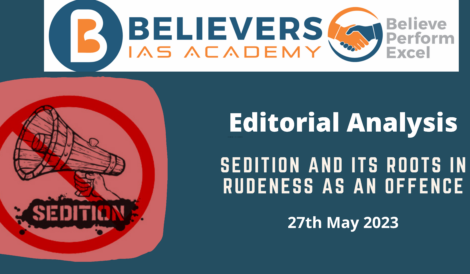‘India’ and ‘Bharat’ retained to align varied views in Constituent Assembly
Context
According to Constituent Assembly deliberations, the names ‘India’ and ‘Bharat’ were kept as titles of the newly sovereign nation in the Constitution to align contrasting sentiments expressed by its creators in 1948.
What is article 1?
- According to Article 1 of the Indian Constitution, India, or Bharat, is a union of states. This article is significant since it creates the Union of India and establishes the tone for the entire constitutional structure.
- Dr. Ambedkar, chairman of the Drafting Committee, adopted Article 1 on September 18, 1949. According to the article, India’s territory includes the states, union territories included in the First Schedule, and other acquired areas. According to Article 2, acquired territory may be turned into states.
What was the debate on Article 1 at the time of law making ?
The discussion took place during the draft Article 1(1) of the Indian Constitution.The initial text read simply, “India shall be a Union of States.”
Argument in favor of ‘India’:
- B.R. Ambedkar, who led the committee that drafted the Constitution, was in favor of keeping the term ‘India.’
- He stressed that ‘India’ had been the country’s recognized name in international treaties, including those with the United Nations.
- The continuity and familiarity of ‘India’ with foreign nations was regarded as critical.
Argument for ‘Bharat’:
- Some members argued that designating the country ‘Bharat’ would be consistent with its rich cultural and historical legacy.
- They contended that using the term ‘Bharat’ would not impede progress and that it reflected the nation’s history and culture.
- Historical references were mentioned, such as the use of ‘Bharat’ by the Chinese traveler Hiuen-Tsang.
What was finally decided on the name as a compromise?
- Both names were incorporated into Article 1(1) of the Constitution by the Constituent Assembly.
- The article’s final language was, “India, that is Bharat, shall be a Union of States.”
- The goal of this compromise was to recognize both historical continuity and cultural relevance.
Conclusion
In summary, the discussions over the names ‘India’ and ‘Bharat’ in the Constituent Assembly highlighted the complicated considerations of historical continuity, cultural importance, international recognition, and language clarity. The decision to include both names in the Constitution intended to create a balance between these considerations while also recognizing India’s diverse traditions and opinions.




